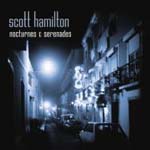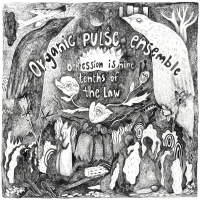Home » Jazz Articles » African Jazz » West by Northwest: Senegal, Morocco, Mali, Niger
West by Northwest: Senegal, Morocco, Mali, Niger
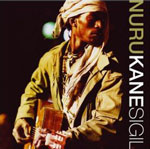 Nuru Kane
Nuru Kane
Sigil
Riverboat
2006
Nuru Kane is a traveler in more than one sense of the word. He grew up in Dakar, Senegal, where he was active playing music, and then he picked up and moved to Paris in the late '90s. By that time he had absorbed a variety of West African and global pop styles into his musical vocabulary. However, the final link clicked into place when he visited Morocco and heard gnawa trance music, which convinced him to pick up the guimbri (a three-stringed acoustic bass).
Kane has made the guimbri a central part of his music ever since, especially in his Paris-based Bayefall Gnawa group. But since his roots in Senegalese (and other West African) styles run so deep, he's been able to come up with interesting fabrics from strands of traditional music which generally don't run together.
Kane's international debut, Sigil, prominently features four members of Bayefall Gnawa (mostly playing traditional West and North African instruments), as well as additional players on percussion, violin, accordion and flute. With the exception of the electric guitar and bass on the title track, the rest of the thirteen-track set is entirely acoustic, which seems to be the best vehicle for Kane's searching voice and the subtle timbres of the main instruments.
Some of this music fits at least roughly into a category, like "Gorée," a raw Malian desert blues piece in the style of Ali Farka Touré. "Bamba," which follows, is built upon a Moroccan gnawa trance foundation and makes careful use of harmonized vocals to lend emphasis to the lyrics—which, in typical mix-and-match fashion, pay tribute to the founder of a Senegalese Sufi brotherhood. The title track recalls the mbalax music of Youssou N'Dour and Cheikh Lo (who, incidentally, is a member of the same Baye Fall sect as Kane).
But the greatest strength of the record is the fact that so much of this music is hybridized in interesting, unpredictable ways. Kane's voice is versatile and expressive, and his guimbri playing anchors the music in a visceral fashion, but he loves to seek out unusual contexts. The bilingual (French/English) liner notes tell the full story; they also present summaries of the lyrics and include a photo of this most eccentric musician and his instrument of choice.
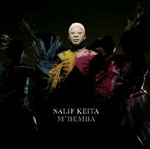 Salif Keita
Salif Keita
M'Bemba
Decca
2006
The strong feeling of homecoming that shines through within the first seconds of M'Bemba is more than just a vibe. The traditional instruments, gently pulsing rhythms and overall upbeat emotion of the record echo the ancient Manding music tradition (whose roots can be traced back to the 13th Century reign of Keita's ancestor Sundiata Keita, the founder of the revered Ancient Empire of Mali).
But they seem to reflect a sense of joy from Keita himself, who made a move for the better when he hacked out the overproduced, sludgy phlegm of his earlier recordings back when he made Moffou (Decca, 2002). He has settled into a similarly acoustic, traditional style on M'Bemba, recorded at his Mali studio with legendary musicians like Toumani Diabate (kora), Ousmane Kouyaté (guitar) and Kanté Manfila (guitar), an early mentor.
One thing you have to be prepared for with just about any Salif Keita record is his vocals, which are at the center of the music. He sings with full vigor, inflecting his words with a characteristic lilt and reinforcing them with regular female choruses, and the results can be operatic in scale. Keita's focus and visceral intensity deserve and earn respect, but they're never the slightest bit understated. That is more or less a given here.
The music which surrounds Keita's voice has a light, limber resonance helped along by the instrumentation (check out the combination of floating kora and rumbly n'goni on the title track), careful pacing (the opener strolls along at a very comfortable medium tempo), and rhythmic emphasis (the percussion-rich, rumba-ized "Calculer" recalls the golden age of Afro-Cuban music in West Africa).
If this is the direction Salif Keita is heading along with his music, let's hope the Malian ambassador continues making great records. It's refreshing to hear an artist in his middle age (Keita is 56) return to his roots, celebrating them with sophistication and verve.
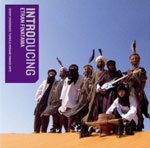 Etran Finatawa
Etran Finatawa
Introducing Etran Finatawa
Introducing/World Music Network
2006
The Sahara may be a forbidding place, and the nomadic people there live in isolation, which may account for the ludicrous length of time that had to pass before their music could be recorded in a way that penetrated the ears of the listening public. Tinariwen, a Tuareg group from the area around northern Mali, made a big splash at the first Festival in the Desert (Essakane, Mali) in 2001; the group's 2002 and 2004 recordings successfully penetrated international markets. Their characteristic style reflects the minimalistic trance-like blues of Ali Farka Toure, but is much more driving and polyphonic.
Enter Etran Finatawa, the group featured on this record. Ten musicians from Niger (four Tuareg, six Wodaabe) got together in 2004 and managed to build up enough momentum for a two-month European tour the next year, when this disc was recorded by Chris Birkett in France. It's interesting to consider this recording as a summit meeting of sorts (the Tuareg breed camels, whereas the Wodaabe herd cattle; likewise, their languages have very different roots), to the extent the individual styles can be sorted and dissected.
But, to these ears anyway, it seems like a mistake to overintellectualize the music and try to break it up into its two component parts. These ten tracks have a bubbly, percolating energy that infuses the record as a whole with mysticism and trance—but not just the kind you can only dance to your head. Like Tinariwen, Etran Finatawa is powered by vocals and electric guitars (of a similarly bluesy kind, though with more trills and decoration, and presumably a greater Arabic emphasis). The additional percussion (tendé drum, akayauré metal percussion, hand claps) tends to sound much more North than West African.
It will be interesting to see if this debut paves the road for more music from the underdocumented nomads of northwestern Africa (which would be excellent, based on what we've heard so far, including material on the recent Rough Guide to the Music of the Sahara). There's much more to this musical culture than just Tinariwen's searing brand of desert blues, that's for sure, and I'm guessing we haven't discovered even half of it yet. But Etran Finatawa's raw, percussive sound is a great discovery, and the full story is carefully documented in the liner notes (as are the messages of the socially conscious lyrics).
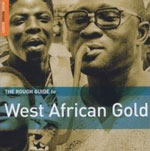 Various Artists
Various Artists
The Rough Guide to West African Gold
World Music Network
2006
For various reasons (including commerce, travel and war), music from the Western Hemisphere hit West Africa hard from the '50s through the '70s, especially certain styles of the African diaspora from Cuba and the United States. This was a homecoming of sorts, because when rumba and jazz (just two prominent influences) echoed back onto African shores, they caught on like an epidemic, infiltrating the music of Guinea, Senegal, Ghana and Nigeria and giving rise to new hybrids like highlife, mbalax and Afro-beat which tended to bring out the best of both worlds. All three of those styles are still very much alive today.
This collection documents the so-called "golden age" of popular dance music in sub-Saharan West Africa, whose beginnings were associated with the New World musical invasion, the giddy joy of independence, and an inventive spirit of mass-hybridization. It makes sense that this set starts with a piece by E.T. Mensah, the Ghanaian musician whose heavily jazz and calypso-inflected big bands are credited with giving birth to highlife—not far down the road, the most popular music on the continent. Meanwhile, government support allowed groups like Bembeya Jazz (Guinea) and the Rail Band (Mali) the degree of continuity and security they needed to craft their own styles. These stories and others are carefully told in the liner notes.
The high points of the record include the '40s classic "Manicero," reinvented in a guitar and horn-driven arrangement by Nigerian saxophonist Dexter Johnson's band with Gambian vocalist Laba Sosseh (who has performed as a guest for the Afro-Cuban revivalist group Africando). The soft, understated elegance of the Balladins, a Guinean little big band, shines through on "Moi Je Suis Décourage"; and the chant-like vocals of Sir Victor Uwaifo's band provide delicious contrast to the Nigerian leader's flute solo.
Given the focus of this compilation on older material, plus the fact that many of these selections were recorded locally under less than ideal conditions, the overall sound quality is not great. But it's certainly plenty sufficient to appreciate the incredible creativity and optimism of the music. In a sense, listening to this disc is like tuning into a time-warp radio, fuzz and all, to another era with a gleeful outlook and dancers all over the floor.
Tracks and Personnel
Sigil
Tracks: Toub; Niane; Colère; Talibe; Diarama; Gorée; Bamba; Çigil; Cheikh Anta; Nabi; Djoloff, Djoloff; Mariama; Mami.
Personnel: Nuru Kane: guimbri, guitar, bass, vocals, percussion; Thierry Fournel: guitar, oud, sanza, vocals; Djeli Makan Sissoko: n'goni; Martin Swan: violin, accordion; Boussaf Lakhdar: percussion, vocals; Adama Mboup: djembe; Penny Cont: Welsh flute; Abdelkader Tab: percussion, carcabas, vocals.
M'Bemba
Tracks: Bobo; Laban; Calculer; Dery; Ladji; Kamoukie; Yambo; Tu Vas Me Manquer; M'Bemba; Moriba.
Personnel: Toumani Diabate: kora; Djelly Moussa Kouyaté, Kanté Manfila, Ousmane Kouyaté: acoustic guitar; Mama Sissoko: n'goni; Toumani Diabaté: kora; Mino Cinellu: percussion. Other musicians not specified.
Introducing Etran Finatawa
Tracks: Surbajo; A Dunya; Iledeman; Aliss; Maleele; Iriarer; Ekenan; Anadjibo; Ronde; Heeme.
Personnel: Ghalitane Khamidoune: lead vocal, lead guitar; Alhousseini Mohamed Anivolla: backing vocal, rhythm guitar; Zaid Ag Abdoul Jamil: tendé, backing vocal; Bagui Bouga: calabash, backing vocal; Bammo Agonla: lead vocal, akayauré; Karikabi Harika Gadé: backing vocal, azakalabó. Additional musicians: Chris Birkett: bass, additional percussion; Sandra van Edig: additional backing vocal.
The Rough Guide to West African Gold
Tracks: Ghana-Guinee-Mali; Let Them Talk; Whiskey Soda; Manicero; Ife Si Na Chi; Moi Je Suis Décourage; Geej; Were Were; The Lord's Prayer; Ekassa No. 34/Igiodo-Giodo; Abenaa Na Aden?; Mali Cèbalenw; Boulmamine.
Personnel: E.T. Mensah; Geraldo Pino & The Heartbeats; Bembeya Jazz; Dexter Johnson & The International Band feat. Laba Sosseh; Celestine Ukwu; Balla et ses Balladins; No. 1 de Dakar feat. Doudou Sow; Horoya Band; Super Sweet Talks; Sir Victor Uwaifo & His Melody Maestroes; Eric Agyeman; Orchestre Rail Band de Bamako feat. Salif Keita; Orchestre Baobab.
Tags
PREVIOUS / NEXT
Support All About Jazz
 All About Jazz has been a pillar of jazz since 1995, championing it as an art form and, more importantly, supporting the musicians who make it. Our enduring commitment has made "AAJ" one of the most culturally important websites of its kind, read by hundreds of thousands of fans, musicians and industry figures every month.
All About Jazz has been a pillar of jazz since 1995, championing it as an art form and, more importantly, supporting the musicians who make it. Our enduring commitment has made "AAJ" one of the most culturally important websites of its kind, read by hundreds of thousands of fans, musicians and industry figures every month.



